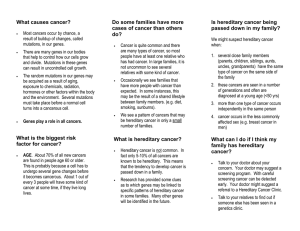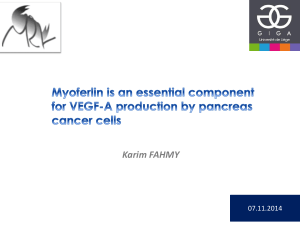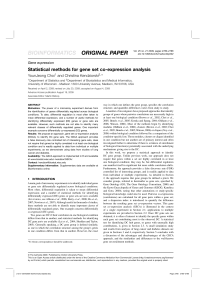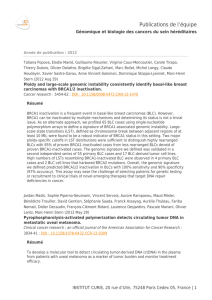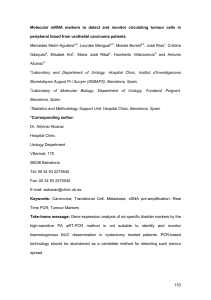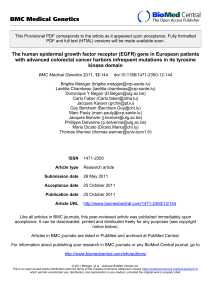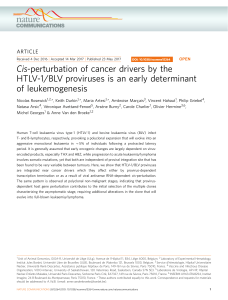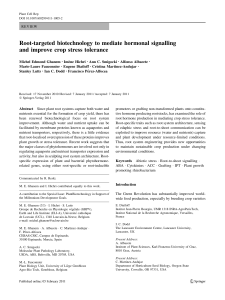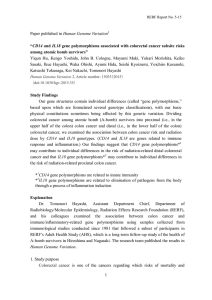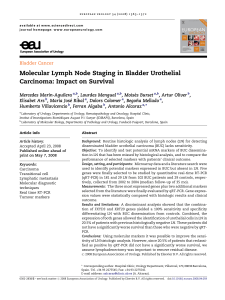Open access
publicité
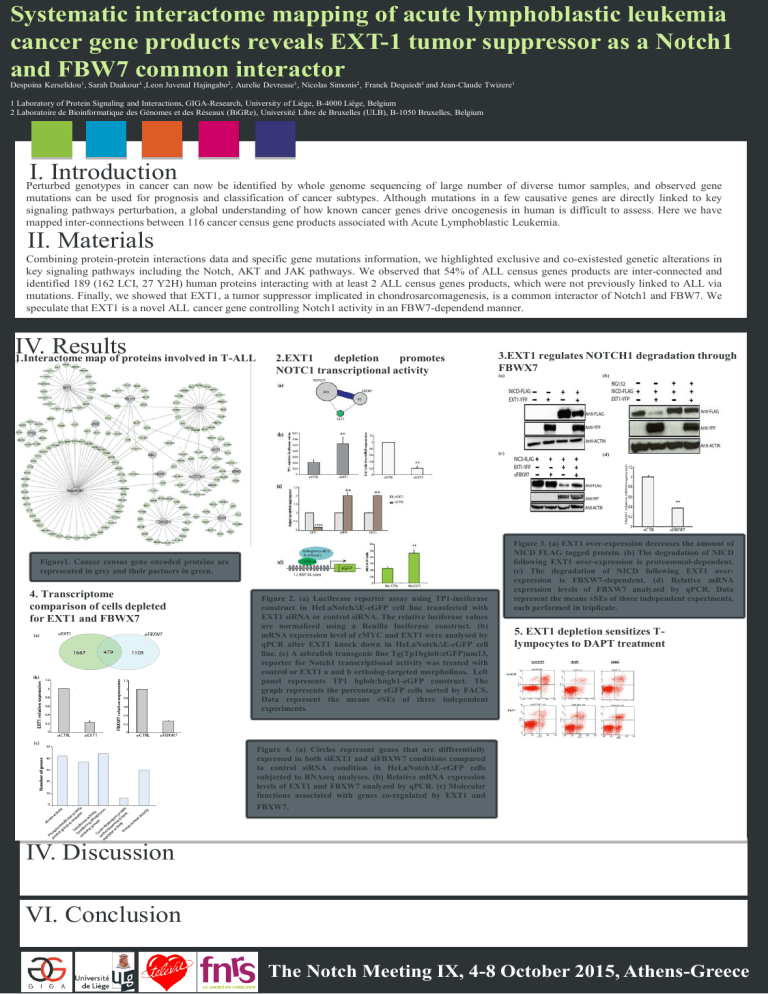
Systematic interactome mapping of acute lymphoblastic leukemia cancer gene products reveals EXT-1 tumor suppressor as a Notch1 and FBW7 common interactor Despoina Kerselidou1, Sarah Daakour1 ,Leon Juvenal Hajingabo2, Aurelie Devresse1, Nicolas Simonis2, Franck Dequiedt1 and Jean-Claude Twizere1 1 Laboratory of Protein Signaling and Interactions, GIGA-Research, University of Liège, B-4000 Liège, Belgium 2 Laboratoire de Bioinformatique des Génomes et des Réseaux (BiGRe), Université Libre de Bruxelles (ULB), B-1050 Bruxelles, Belgium I. Introduction Perturbed genotypes in cancer can now be identified by whole genome sequencing of large number of diverse tumor samples, and observed gene mutations can be used for prognosis and classification of cancer subtypes. Although mutations in a few causative genes are directly linked to key signaling pathways perturbation, a global understanding of how known cancer genes drive oncogenesis in human is difficult to assess. Here we have mapped inter-connections between 116 cancer census gene products associated with Acute Lymphoblastic Leukemia. II. Materials Combining protein-protein interactions data and specific gene mutations information, we highlighted exclusive and co-existested genetic alterations in key signaling pathways including the Notch, AKT and JAK pathways. We observed that 54% of ALL census genes products are inter-connected and identified 189 (162 LCI, 27 Y2H) human proteins interacting with at least 2 ALL census genes products, which were not previously linked to ALL via mutations. Finally, we showed that EXT1, a tumor suppressor implicated in chondrosarcomagenesis, is a common interactor of Notch1 and FBW7. We speculate that EXT1 is a novel ALL cancer gene controlling Notch1 activity in an FBW7-dependend manner. IV. Results 1.Interactome map of proteins involved in T-ALL III. Objectives 3.EXT1 regulates NOTCH1 degradation through 2.EXT1 depletion promotes NOTC1 transcriptional activity FBWX7 Figure1. Cancer census gene encoded proteins are represented in grey and their partners in green. 4. Transcriptome comparison of cells depleted for EXT1 and FBWX7 A B Figure 2. (a) Luciferase reporter assay using TP1-luciferase A construct in HeLaNotch∆E-eGFP cell line transfected with EXT1 siRNA or control siRNA. The relative luciferase values are normalized using a Renilla luciferase construct. (b) mRNA expression level C of cMYC and EXT1 were analysed by qPCR after EXT1 knock down in HeLaNotch∆E-eGFP cell line. (c) A zebrafish transgenic line Tg(Tp1bglob:eGFP)um13, reporter for Notch1 transcriptional activity was treated with control or EXT1 a and b ortholog-targeted morpholinos. Left panel represents TP1 bglob:hngb1-eGFP construct.D The graph represents the percentage eGFP cells sorted by FACS. Data represent the means ±SEs of three independent experiments. (a) (b) (c) (d) Figure 3. (a) EXT1 over-expression decreases the amount of NICD FLAG tagged protein. (b) The degradation of NICD following EXT1 over-expression is proteasomal-dependent. (c) The degradation of NICD following EXT1 overexpression is FBXW7-dependent. (d) Relative mRNA expression levels of FBXW7 analyzed by qPCR. Data represent the means ±SEs of three independent experiments, each performed in triplicate. 5. EXT1 depletion sensitizes TC lympocytes to DAPT treatment E F Figure 4. (a) Circles represent genes that are differentially expressed in both siEXT1 and siFBXW7 conditions compared to control siRNA condition in HeLaNotch∆E-eGFP cells subjected to RNAseq analyses. (b) Relative mRNA expression levels of EXT1 and FBXW7 analyzed by qPCR. (c) Molecular functions associated with genes co-regulated by EXT1 and FBXW7. A IV. Discussion VI. Conclusion The Notch Meeting IX, 4-8 October 2015, Athens-Greece
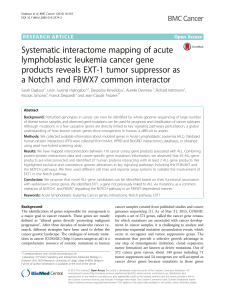






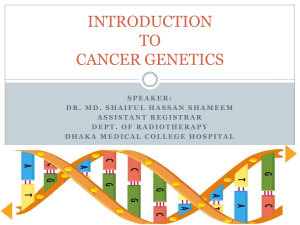
![[PDF]](http://s1.studylibfr.com/store/data/008642620_1-fb1e001169026d88c242b9b72a76c393-300x300.png)


